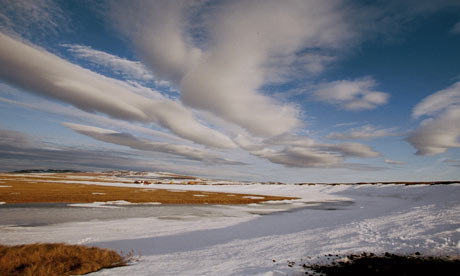This article is about a year old and it makes points that have been made before, such as:
1. The medical field is not prepared for Global Warming. Our Healthcare system world wide will not be able to cope with the shift in and increase in what are largely thought of as tropical diseases today.
2. Medical Communty’s contribute to Global Warming through inefficiencies.
They also make the point that whether you believe in Peak Oil or not, Healthcare is addicted to Oil.
3. The pharmaceutical industry’s dependence on Oil would cause it to collapse if oil supplies became restricted or suffered a huge price increase.
4. Hospitals are dependent on electricity (coal) for their medical practices and have very little flexibility built into their practice. eg. No xrays, then what?
But the most telling part for me is the following.
:}
http://www.greens.org/s-r/45/45-05.html
Medicine at the Crossroads of Energy
and Global Warming
by Dan Bednarz, Ph.D., and Kristin Bradford, M.D., M.P.H.
The difficult thing now is there’s no [longer any] low-hanging fruit. — Roger Elliott, St. Joseph’s Hospital, Chippewa Falls, WI, on efforts to reduce hospital energy costs.
[A]ny field … should be judged by the degree to which it understands, anticipates, and takes action in regard to changes in society. — Bernard Sarason, The Making of an American Psychologist
dot dot dot (as they say)
A given in hospital operations is unlimited inputs of energy and resources; this results in waste in the name of hygiene, insurance and regulatory considerations, and “the best” care. However, the fact that worldwide “energy demand is accelerating” and on its current pace “will double by the year 2050” will soon burst upon medicine.
Turning specifically to energy usage, the Health Care Energy Project tells us that hospitals “use twice as much energy per square foot as office buildings…” In addition, hospitals consume large quantities of petroleum-based, processed, and transported products ranging from aspirin to jells and lubricants to plastic dinnerware and gloves to pharmaceuticals, syringes, IV and dialysis tubing, to name but a few. And most of these items are produced for one-time, non-recyclable use. Petroleum derivatives are also found in many computer parts, electronic equipment, furniture, and so on.
… hospitals “use twice as much energy per square foot as office buildings…”
As noted, hospital administrators are somewhat aware of and responding to the rise in energy costs for heating, cooling, and lighting, primarily by locating the problem in the domain of facilities management. Therefore, controlling energy costs in a hospital largely is confined to electricity and natural gas bills.
As the costs of oil and natural gas have risen in recent years facilities managers are trying to make their buildings more energy efficient, hoping that such savings will offset price rises. Yet, a 2006 survey of hospitals found:
More than 90% … reported higher energy costs over the previous year [2005], and more than half cited increases in double-digit percentages.
The facilities management response is to replace, retrofit or upgrade inefficient infrastructure —boilers, lighting fixtures, building insulation, windows, etc., and in general to “modernize” facilities — in accordance with the Energy Star Program. Some of the newest “green” hospital building approaches promise to reduce energy consumption by as much as 60% below code mandates. This is encouraging, but only a beginning.
However, new construction is done only when it makes “economic sense,” leaving many older hospitals and kindred structures too obsolete to “economically” justify retrofitting or demolishing and replacement — again energy is presumed to be plentiful and cheaper than upgrading — and no consideration whatsoever is given to its scarcity. Moreover, the costs for new hospital construction are soaring, another factor traceable to increasingly expensive fossil fuels. Dave Carpenter, summarizing a 2006 energy survey of hospitals, comments on the constraints facilities managers face:
Money-related reasons were among those given most often in response to a … question asking why recommended energy-saving measures hadn’t been implemented, including 37% who reported a lack of funds. Additionally, 31% cited other priorities, 26% said the payback period was judged to be too long, 23% said operations and maintenance budgets were underfunded and 16% cited lack of senior management commitment and support.
Given these constraints:
Facilities managers have little choice but to stay on the lookout for energy savings wherever they can be found. [One manager] says “it’s going to get worse before it gets better…”
We would argue that “it,” energy costs, will not get better. The entire health care industry will be forced to accommodate to dwindling fossil resources while simultaneously beginning to face the consequences of global warming.
This is stark because the health care system —already stressed in other ways — could begin to fail and even collapse for want of energy and a surge in patients.
… the health care system … could begin to fail and even collapse…
Finally, a word is needed on the third so-called “fall-back” fossil fuel we have barely mentioned, coal, since many energy experts offer it as a painless fix for peak oil. While the high levels of greenhouse emissions of coal are well known, what is less appreciated is that carbon sequestration to control greenhouse emissions is expensive and still an unproven technology. Second, recent reviews have concluded there are substantially less coal reserves than the commonly accepted estimates of 200–300 years supply. Perhaps as little as a few decades of recoverable coal remains, much of it low-grade and high in pollutants.
The dimensions of what we face are uncertain, but the major question undeniably is how will hospitals change given the ecological (global warming as well as multiple sources of pollution and resource scarcity) and geological (twilight of fossil fuels) state of affairs the world now faces?
:}
And the answer is?
:}



 Permafrost in Siberia. Methane emissions from the Arctic permafrost increased by 31% from 2003-07, figures show. Photograph: Francis Latreille/Corbis
Permafrost in Siberia. Methane emissions from the Arctic permafrost increased by 31% from 2003-07, figures show. Photograph: Francis Latreille/Corbis





 The choice was not difficult. The scariest polluter in the U.S. is Don Blankenship, CEO of Massey Energy. The guy is evil, and I don’t use that word lightly.
The choice was not difficult. The scariest polluter in the U.S. is Don Blankenship, CEO of Massey Energy. The guy is evil, and I don’t use that word lightly.